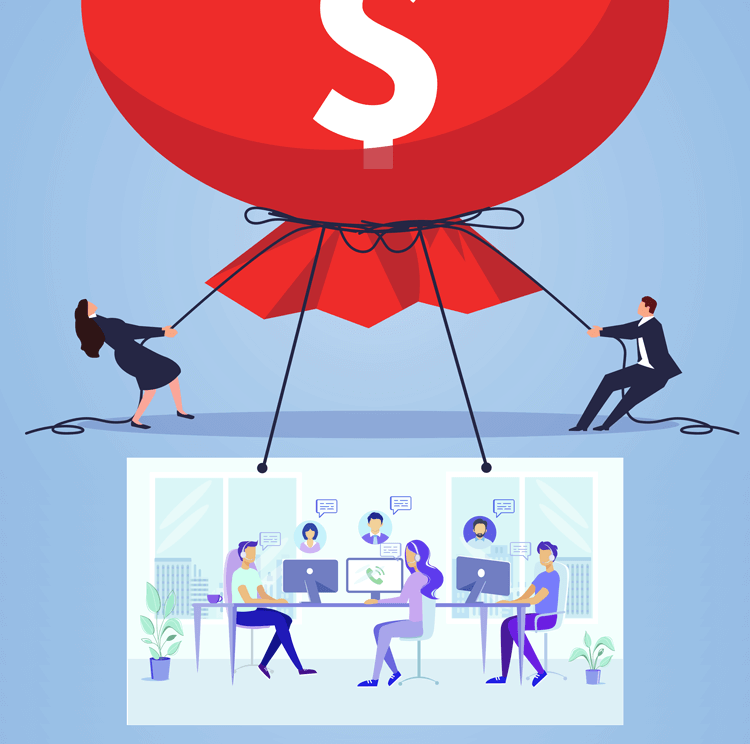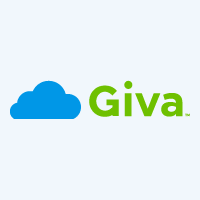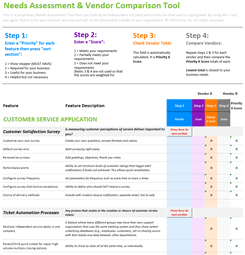How to Reduce Call Center Costs: 5 Common Causes and 9 Top Strategies
It's a misconception that call centers are no longer necessary for modern customer service. In fact, it's the opposite — phone calls are the preferred channel for customer service interactions. That means that call centers will continue to play an essential role in customer service.
However, with call centers constantly trying to cut costs, how can costs be reduced without sacrificing customer service quality? Or employee satisfaction?
In this article, we will highlight the five most significant causes of concern regarding call center finances. Then, we will introduce nine different, actionable strategies for reducing call center costs.

5 Causes of High Call Center Costs
Simply put, operating a high-quality, productive, and cost-efficient call center costs a lot of money. But that's okay because if your customers are happy and your business is growing, the costs associated with doing business are worth it.
However, once certain expenses begin to grow it becomes time to find out which parts of your call center operations are the most expensive and why.
Let's take a look at some examples.
-
Labor Costs
Labor is one of the most significant costs for most call centers. This category encompasses costs associated with hiring and training, wages and employee benefits, and turnover.
Poor training and inadequate working conditions lead to high turnover rates.
As a result, the call center must spend more money on recruitment, training, and onboarding processes. In addition, improper management of call center personnel, such as inefficient scheduling practices and overstaffing, can create unnecessary labor costs.
-
Facility Costs
Call center facilities have significant overhead costs. Renting an office and paying for utilities (e.g., plumbing, electricity, internet, etc.) are all necessary business costs.
Facility expenses can become even more costly if you overestimate the space you require, leading to inefficient space utilization. Also, renting in a premium location or investing in expensive facility amenities and infrastructure can raise call center costs.
-
Software Expenses
It's no secret that call centers heavily rely on technology to manage customer interactions. Hardware like servers, computers, and telephones are expensive. Likewise, software like Customer Relationship Management (CRM), Interactive Voice Response (IVR) technology, and AI all cost a pretty penny.
Overinvesting in redundant technology solutions raises call center software expenses. Likewise, a lack of proper integration between software can result in wasted investment. Not to mention underutilization and lower productivity. Finally, overpaying for specific software creates further financial pressure.
-
Maintenance Costs
Routine maintenance should be part of every good business plan, especially for call centers. For example, all call centers should take off-line and service essential office hardware.
Neglecting routine hardware and software maintenance can create breakdowns that require emergency and more costly fixes. Similarly, if your hardware and software are not sufficiently organized and updated, call center personnel will have issues with their productivity, further increasing costs.
-
Security and Compliance Issues
If you work in an industry where following specific compliance regulations is critical to your business, then you know fines for not following compliance standards can be costly. Further, dealing with potential security breaches or cyberattacks can cost a lot of money to fix.
Lax security also hurts customers' trust in your company, negatively affecting their loyalty and, consequently, your sales. A study of 8,000 consumers and business buyers found that 41% of customers don't believe companies care about their data security. Conversely, 84% of customers are more loyal to companies with strong security.
Both compliance and security issues typically originate from inadequate employee training. Without proper training, data can be mishandled, resulting in potential fines. Similarly, security processes are not followed, which exposes you to undue financial and security risks.
9 Top Ways To Reduce Call Center Costs
76% of customers interact with customer service personnel by phone calls. This statistic speaks to the ongoing importance of call centers in the customer service industry. Understanding this, it becomes clear that the long-term success of call centers depends upon reducing costs without sacrificing the preference of customers to speak over the phone and their experience while doing so.
-
Provide a Self-Service Option
The need for self-serve customer service resources has never been more critical.
Salesforce's "State of the Connected Customer Report" found that most customers won't wait for a customer service rep to give them information they can find themselves. In fact, 68% would rather use self-service channels, such as knowledge bases or customer portals — for simple questions.
With more customers solving their own issues with informative customer service resources, there are fewer stressors (and costs) put upon the call center.
-
Use Interactive Voice Response (IVR) Technology
IVR technology allows call centers to route calls to specific agents with the correct expertise to meet the customer's needs. It also eliminates an agent's manual task of routing calls. Instead, the customer interacts with their voice or by pushing a button to speak with the correct representative.
IVR technology also guarantees that customers are only one degree of separation away from the person they need to speak with. This streamlined IVR process allows the call center to operate efficiently. But companies must be careful to make sure the interaction allows the customer to quickly find answers or be connected to a live agent without becoming frustrated.
Other routing technologies can help call centers operate more efficiently and reduce costs. For example, skills-based routing and predictive behavior routing use algorithms to route incoming calls based on a variety of indicators:
- The caller's location
- History of the customer's previous interactions
- The customer's past behavior
- The skills or training of all available agents at the time
-
Leverage AI Technology
According to the 2024 Global Contact Survey, 1 in 6 contact centers have deployed AI technologies. The early adopters of AI technology are more likely to reap benefits than future adopters. For example, early adopters of AI experienced:
- Improved customer effort scores
- Higher agent productivity
- Improved self-service rates
- Higher agent occupancy rates
-
Focus on Specific Call Center KPIs and Metrics
Evaluating Key Performance Indicators (KPIs) and their respective metrics is the most ideal way to gauge the productivity and cost-efficiency of a call center. But which metrics are most important for call centers?
Critical Call Center Metrics
Metric
Definition of the metric
How the metric is measured
First call resolution rate
The average number of times an interaction is resolved by an agent when first contacted
Divide the # of issues resolved on the first contact by the total # of issues
Average handle time
The average time it takes an agent to handle an interaction
Add the total time spent on each interaction and then divide by the total # of interactions
Agent occupancy rate
The % of time call center personnel spend on calls or handling call-related tasks compared to their available working time
Time spent on call-related activities divided by the total logged-in time
-
Move Your Contact Center to the Cloud
Cloud-based contact centers are becoming commonplace in the customer service industry. That's because they allow you to avoid costly on-site expenses.
The most significant advantage of cloud-based contact centers is that many offer pay-as-you-go pricing. This allows you to only spend money on the resources. Consequently, you avoid overspending. The pay-as-you-go pricing model also streamlines your company's scaling process if and when you grow.
-
Enhance Personnel Training
Properly training call center agents is another way to reduce costs. In addition to short-term cost-savings from proper training, investing in your personnel has positive long-term implications.
In 2024, companies that invested in agent training and career progression achieved 23% more of their strategic goals than companies that didn't prioritize their personnel. This statistic really speaks to the importance of investing in your people first to accomplish your company's goals second.
-
Use Speech Analytics Software for Call Monitoring
Speech analytics software is becoming increasingly important for reducing call center costs. This is especially true for organizations that adhere to legal and regulatory compliance standards, like healthcare organizations. Giva has created a series of AI-powered and HIPAA-compliant cloud applications that are ideal for healthcare organizations.
For call centers, speech analytics software can flag compliance violations with keyword spotting software. This can help call centers avoid costs associated with non-compliance penalties and legal expenses.
Examples of speech analytics software:
- Natural Language Processing (NLP): Software that can analyze the meaning of language, translate between languages, and recognize patterns.
- Machine Learning (ML): A type of artificial intelligence that uses algorithms and data to organize information, pinpoint patterns, and make projections.
Call center managers can also use data from speech analytics software to identify training needs. This can reduce repetitive or unnecessary training protocols, further reducing costs.
-
Explore Outsourcing Options
Outsourcing your call center's operations to a third-party service provider eliminates the need to invest in a call center. This means you can avoid costs related to renting or buying call center facilities. You can also avoid investing in costly technology and performing recruitment, hiring, and training of call center personnel.
Benefits that come from third-party call center operations:
- Well-established infrastructure
- Highly skilled employment pool
- Efficient hiring and training programs
- Lower labor costs
Full disclosure: it can be challenging to find a third-party call center service provider that meets or exceeds your expectations (e.g., customer experience, company culture, compliance, and security). But if you can pull it off, it's a "match made in heaven" relationship.
-
Use Remote Call Center Employees
If the obstacles associated with outsourcing your call center operations are seemingly not worth it, then keeping your call center in-house is perfectly okay. However, in this case, you'll want to invest in a remote call center workforce.
By building a remote workforce of call center personnel, you can cut a lot of overhead costs, such as:
- Rent
- Utilities
- Equipment
- Furniture
- Office supplies
- Employee amenities
To make matters better, building a remote call center business model means you can tap into a larger talent pool of more diverse personnel from different geographic regions and time zones. This is especially helpful for flexibility with scheduling and adjusting staffing.
The fact is many employees feel more productive at home. A study from the Quarterly Journal of Economics found this true for certain call center personnel. Employees are also more content with their jobs, reducing turnover and the costs associated with it.
FAQs
What's the most expensive call center expense?
It's generally understood that labor costs are the highest expense for call centers. This includes salaries, employee benefits, training, and turnover expenses.
What is the average cost per call for a call center?
Every call center's cost per call will be unique to them. However, average estimates from the industry clock in between $2.70 and $5.60 per call.
To calculate the cost per inbound call: total your operational expenditures with capital expenditures and divide by the number of inbound calls. (The formula is the same for outbound calls also).
What is the 80/20 rule in a call center?
The 80/20 rule, also known as the Pareto Principle, is the concept that 80% of outputs come from 20% of inputs. A common example is that 80% of your sales come from 20% of your customers.
However, for call centers, the 80/20 rule dictates that 80% of inbound calls should be answered within 20 seconds.
Reducing Call Center Costs Will Continue to Be Important for Customer Service
Even in today's age of omni-channel contact centers, customers prefer speaking over the phone. That's not to say that customers don't use other channels, like email, self-service help desks, or AI chatbots. They do. But even now, speaking over the phone is sometimes the most efficient way to solve an issue.
That being said, call centers will continue to play a critical role for customer service departments all over the globe. To ensure that call centers remain sustainable in the future, it's important to reduce costs based on critical KPIs and metrics. And to do so strategically without sacrificing the customer's experience.
Giva Can Help Streamline Your Call Center Operations
Giva's AI and human-powered customer service software for call centers bring an intuitive and insightful experience for your agents and management.
Features include
- Interactive dashboard
- Customer self-service portal
- Robust reports for better decision making
- AI Ticket Copilots
Ready to learn more? Book a free Giva demo to see our solutions in action, or start your own free, 30-day trial today!





